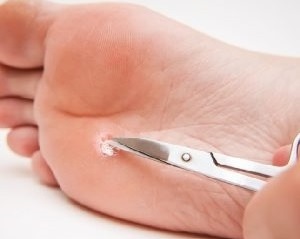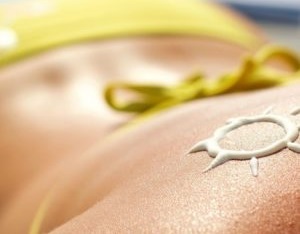Warts are not only unpleasant skin defects, but also complex diseases requiring complex care. The root cause of papilloma proliferation is a virus that is dormant in the human body. Laser wart removal is a modern, safe method. It is used all over the world: fast healing and minimal risk of relapse allows you to get rid of warts in children and adults without consequences.
Modern method of removing warts
Reduced immunity is a prerequisite for the appearance of warts. Growth is very fast and can form intact clusters. You can become infected with the papilloma virus - the root cause of disease - through contact with someone who is sick or through their personal belongings. Whatever the reason for warts, they must be treated. The first stage of comprehensive treatment is the removal of all formations on the skin.
Modern methods of wart excision include radio waves and laser removal. Laser destruction of the neoplasm on the skin is the simplest and most painless procedure that guarantees stable results. Minor surgery is performed under local anesthesia and without long-term additional preparation. Smooth removal of buildup is carried out in specialized offices and only by experienced doctors. The procedure stages and the doctor's qualifications are a guarantee that the disease will not recur in the near future.
What types of warts do laser remove?
Papillomas can differ in appearance and location on the human body. Warts affect the arms, legs, back and face of both adults and children. There is no age limit for people with papillomatosis. With the help of laser therapy, plantar warts can be removed. These are neoplasms in the legs that develop in areas of the skin that are stimulated. Overlay, the dead skin turns into a seal with a clear core visible in the middle.
Laser is used to remove common warts: solid growths, round structures. Such warts differ in color from the skin (much darker). Over time, common warts get bigger and bother a person: they cause severe discomfort and sometimes pain.
Laser therapy is used to remove flat warts. The size of the small formations is not more than 1 cm, the growth is flat in structure and from the sides resembles skin-colored rashes. Flat warts do not rise far above the skin and rarely cause discomfort to a person. Before prescribing a laser technique to remove buildup, an accurate diagnosis is determined - warts and their types are checked.
Benefits of the procedure

During the initial examination, it is necessary to determine the status of the neoplasm. If it is not cancerous, it can be removed by any of the modern methods. For warts on the legs, the removal is carried out in several stages - such formations often have stems growing in soft tissue. Warts on the feet are always painful and cause discomfort when walking. Only with the help of the laser method, the removal of such warts is carried out in one stage, and allows you to quickly recover after the procedure.
Calluses are difficult to remove without subsequent recurrence: simple surgical excision is ineffective. Laser therapy helps destroy all virus-infected cells, even those not visible to the naked eye.
The advantages of laser therapy include: speed of procedure and speed of recovery. In total, the removal of growth takes no more than half an hour, depending on the complexity of the neoplasm and the number of warts. The minimal number of contraindications makes laser therapy universal and safe for children. It is allowed to carry out the procedure from the age of 5.
This painless procedure is suitable for people with hypersensitivity: a small amount of medication and pain reliever is used to remove warts.
After laser therapy, almost no scar or hard scar is left on the affected skin area. Fast recovery and low likelihood of complications are the main advantages of this procedure compared to other modern techniques. The innovative equipment allows mini surgery to be performed without causing any discomfort to the patient. Rehabilitation of the patient is carried out at home under his usual conditions.
Contraindications for this procedure
Effective technique has a number of contraindications. In preparation for the mini surgery, the patient undergoes a complete body examination. Based on the results obtained, the treating doctor assesses further treatment options and risks to the patient.
Contraindications for laser therapy:
- skin rashes and herpes;
- advanced dermatitis;
- high blood pressure;
- acute respiratory disease (the patient has a weakened immune system after the previous illness);
- malignant disease.

A pregnant woman should refuse this procedure: if possible, laser therapy is postponed until the postpartum period. If a rash of unknown origin appears on the human body, it is necessary to postpone the removal of the wart. Systemic disease is an immediate contraindication for minor surgery.
Thyroid disease prevents the use of laser light to remove unpleasant warts. Allergy to the sun is a rare disease that does not allow laser procedures: in such cases, the fight against warts is carried out using radio wave therapy.
Severe renal or hepatic impairment is contraindicated for minor surgery. Before using modern techniques, it is necessary to take into account all the contraindications that can cause serious complications in adults or children.
How is the procedure performed
This procedure is performed under sterile conditions. Previously, the patient underwent blood and urine tests. Based on the results obtained, the type of anesthesia used and the pain medication that will be needed during laser therapy are determined. Non-invasive methods exclude any contact with the skin: the person sits on a comfortable sofa in a lying or sitting position. A medicine is injected on the side of the wart, which is supposed to reduce pain.
After 5-10 minutes, the injected drug starts to work. The laser beam affects the buildup for several minutes. After the procedure, the affected skin area is treated with special tools and a bandage is applied.
The half hour operation does not require hospitalization: immediately after laser therapy, the patient goes home on his own.
Skin care and re-dressings are done at home. During the procedure, the possibility of bleeding is completely excluded. If there are no skin wounds, the infection or pathogenic microorganisms cannot penetrate into the wound - excluding secondary postoperative infections.
Rehabilitation after laser release
Direct healing of wart-affected areas depends on the procedure being performed. High-tech lasers are completely sterile (bactericidal). It acts on the skin and does not cause inflammation - for this reason, there are no visible scars or scars on the body. In the laser treated area, bacterial or viral pathogens are completely destroyed. Immediately after the procedure, you may feel some discomfort under the bandage, which will go away soon.
The skin heals completely within 2 weeks (up to one month in immunocompromised persons). A hard crust forms on the treated area: healing occurs underneath. After the lower skin heals, the crust will come off without further damage.
The crust lasts about 10 days and causes no discomfort to humans. New skin appears in the third week after the procedure.
Home Care
Home care includes periodic skin care. The patient treats the crust and the surrounding skin with a disinfectant. The crust must not be torn or wet - this protects the new skin.
Due to accidental injury, infection or yeast infection can occur. Such a result does not allow the wound to heal, and soon new warts appear.
Do not tan until new skin appears: scale should not be exposed to ultraviolet rays. You should not visit the sauna or solarium during your rehabilitation period. Visiting ponds or open water bodies is not included. Skin care after laser therapy with cosmetic products is not allowed.
Products contain alcohol which dries out the crust which is harmful to the skin. The patient's behavior after laser removal from the buildup determines his cure rate.














































































